How to Describe Excitement in Words: 52 Examples
By: Author Paul Jenkins
Posted on Published: August 30, 2023 - Last updated: January 5, 2024
Categories Creative Writing , Writing
Do you ever struggle to find the right words to describe excitement? Whether you’re writing a novel, a poem, or simply trying to express your feelings, accurately conveying excitement can be a challenge.
Excitement is a complex emotion that can be manifested in a variety of ways, both physically and emotionally.
In this article, we’ll explore some tips and tricks for describing excitement in words, as well as some synonyms and physical manifestations of excitement that you can use to add depth and nuance to your writing.
Understanding excitement is the first step to describing it effectively. Excitement is a feeling of enthusiasm, eagerness, or anticipation that can be caused by a variety of stimuli, such as a thrilling event, a new opportunity, or a positive outcome.
Excitement can be experienced in both positive and negative situations, and can range from mild to intense. To describe excitement effectively, you need to be able to identify and convey the specific emotions and sensations that are associated with it.

Key Takeaways
- Understand that excitement is a complex emotion that can be manifested in a variety of ways, both physically and emotionally.
- Use synonyms and physical manifestations of excitement to add depth and nuance to your writing.
- To describe excitement effectively, you need to be able to identify and convey the specific emotions and sensations that are associated with it.
52 Examples of How to Describe Excitement in Words
Before we dig into the nature of excitement and how to express it, take note of these 52 words for excitement:
- Exhilarated
- Enthusiastic
- Electrified
- Full of gusto
- Over the moon
- Raring to go
- All wound up
- In seventh heaven
- Jumping for joy
- On cloud nine
Understanding Excitement
Excitement is a powerful emotion that can be difficult to describe accurately. It is a feeling of enthusiasm and eagerness that can be triggered by a wide range of events, from the anticipation of a special occasion to the thrill of a new experience.
In this section, we will explore the nature of excitement and how to describe it in words.
The Emotion of Excitement
Excitement is a positive emotion that is associated with feelings of pleasure and anticipation. It is often accompanied by physical sensations, such as an increased heart rate, rapid breathing, and a rush of adrenaline.
These physiological responses are part of the body’s natural “fight or flight” response and can contribute to the sense of excitement.
When you experience excitement, you may feel energized, focused, and optimistic. You may also feel a sense of urgency or impatience, as you eagerly await the object of your excitement.
Excitement can be contagious, and it is often expressed through body language, such as smiling, jumping up and down, or clapping.
Excitement Vs. Other Emotions
Excitement is a distinct emotion that can be differentiated from other feelings, such as happiness, joy, and anticipation. While these emotions may be related to excitement, they are not the same thing.
Happiness is a general feeling of contentment and well-being, while joy is a more intense emotion that is often associated with spiritual or religious experiences.
Anticipation is the feeling of looking forward to something, but it may not necessarily be accompanied by the physiological responses of excitement.
It is important to accurately describe excitement in words, as it can be a powerful tool for communication. Whether you are writing a novel, giving a speech, or simply sharing your experiences with others, the ability to convey the feeling of excitement can help to engage and inspire your audience.
In conclusion, excitement is a complex emotion that can be difficult to describe accurately. By understanding the nature of excitement and how it differs from other emotions, you can better communicate your feelings to others and share in the joy of exciting experiences.
Describing Excitement in Writing
When writing, it’s important to be able to convey emotions effectively. Excitement is one such emotion that can be challenging to describe accurately.
Here are a few tips on how to describe excitement in writing.
Use of Adjectives
Adjectives are an essential tool for describing excitement. They can help convey the intensity of the emotion and paint a vivid picture for the reader. Some examples of adjectives for excitement include:
- Anticipation
- Exhilaration
When using adjectives, it’s important to strike a balance between being descriptive and being repetitive. Try to use a variety of adjectives to describe excitement, and avoid using the same ones over and over again.
Creating Exciting Characters
Another way to convey excitement in writing is by creating exciting characters. These characters should be dynamic and engaging, with personalities that are larger than life.
They should also be passionate about their goals and willing to take risks to achieve them.
To create exciting characters, consider giving them unique quirks or mannerisms that make them stand out. You can also have them engage in exciting activities or take part in thrilling adventures.
By doing so, you can help the reader feel the excitement along with the character.
Building Exciting Scenarios
Finally, building exciting scenarios is another way to convey excitement in writing. These scenarios should be action-packed and full of suspense, with high stakes that keep the reader on the edge of their seat.
To build exciting scenarios, consider incorporating elements like danger, suspense, and unexpected twists.
You can also use sensory details to help the reader feel like they are part of the action. By doing so, you can create a sense of excitement that will keep the reader engaged from start to finish.
Synonyms for Excitement
When it comes to describing excitement, it can be challenging to find the right words to convey the feeling accurately. Fortunately, there are many synonyms for excitement that you can use to express your emotions more precisely.
In this section, we will explore some of the most common and less common synonyms for excitement.
Common Synonyms
Here are some of the most common synonyms for excitement that you can use in your writing:
- Thrill : A feeling of excitement or pleasure that is often associated with an activity or event that is particularly enjoyable or exciting.
- Enthusiasm : A strong feeling of excitement or eagerness about something.
- Fervor : A strong feeling of excitement or enthusiasm that is often associated with a particular cause or belief.
- Exhilaration : A feeling of excitement and energy that is often associated with physical activity or adventure.
- Passion : A strong feeling of enthusiasm or excitement that is often associated with a particular activity, hobby, or interest.
Using these synonyms can help you convey your excitement more effectively and make your writing more engaging for your readers.
Less Common Synonyms
Here are some less common synonyms for excitement that you can use to add variety to your writing:
- Zeal : A strong feeling of enthusiasm or eagerness that is often associated with a particular goal or objective.
- Rapture : A feeling of intense pleasure or excitement that is often associated with a particularly enjoyable or exciting experience.
- Euphoria : A feeling of intense happiness or excitement that is often associated with a particularly positive or uplifting experience.
- Ecstasy : A feeling of intense pleasure or excitement that is often associated with a particularly enjoyable or exciting experience.
- Delight : A feeling of great pleasure or excitement that is often associated with a particularly enjoyable or exciting experience.
Using these less common synonyms can help you add variety to your writing and make your descriptions of excitement more interesting and engaging for your readers.
Physical Manifestations of Excitement
When you’re excited, your body reacts in various ways, both internally and externally. In this section, we’ll discuss some of the physical manifestations of excitement.
Visible Signs
There are many visible signs that can indicate excitement. Here are a few:
- Increased Heart Rate: When you’re excited, your heart rate increases. This is because your body is preparing for action, and your heart needs to pump more blood to your muscles.
- Dilated Pupils: Excitement can cause your pupils to dilate, making your eyes appear larger.
- Flushed Skin: Excitement can cause your skin to flush, giving you a rosy glow.
- Rapid Breathing: When you’re excited, you may breathe more rapidly than usual. This is because your body needs more oxygen to prepare for action.
- Increased Energy: Excitement can give you a burst of energy, making you feel more animated and lively.
Internal Sensations
Excitement can also cause various internal sensations. Here are a few:
- Butterflies in Your Stomach: You may feel butterflies in your stomach when you’re excited. This is because your body is producing adrenaline, which can cause your stomach to feel fluttery.
- Tingling Sensation: Excitement can cause a tingling sensation in your body. This is because your body is producing adrenaline, which can cause your nerves to become more sensitive.
- Increased Sensitivity: When you’re excited, you may become more sensitive to touch, taste, and smell. This is because your body is preparing for action, and your senses need to be heightened to detect any potential threats or opportunities.
- Heightened Awareness: Excitement can also cause a heightened sense of awareness. You may become more alert and focused, as your body prepares for action.
In conclusion, excitement can manifest itself in various ways, both internally and externally. By understanding the physical manifestations of excitement, you can better describe this emotion in your writing.
Remember to use descriptive language and sensory details to bring your writing to life.
Emotional Spectrum of Excitement
Excitement is a complex emotion that can range from mild eagerness to extreme frenzy. It is a feeling of enthusiasm or anticipation that can be experienced in various contexts. In this section, we will explore the emotional spectrum of excitement and how to describe it in words.
From Eagerness to Frenzy
Excitement can manifest in different ways, ranging from a mild sense of eagerness to an extreme state of frenzy. The following table summarizes the emotional spectrum of excitement:
| Emotion | Description |
|---|---|
| Eagerness | A feeling of anticipation or enthusiasm about something |
| Enthusiasm | A strong feeling of excitement or interest |
| Thrill | A sudden feeling of excitement or pleasure |
| Euphoria | A feeling of intense happiness or excitement |
| Frenzy | A state of wild or chaotic excitement |
When describing excitement, it is important to consider the intensity of the emotion and choose the appropriate words to convey it.
For example, if you are describing a situation where someone is mildly excited, you might use words like “eager” or “enthusiastic.”
On the other hand, if you are describing a situation where someone is extremely excited, you might use words like “ecstatic” or “frenzied.”
Excitement in Different Contexts
Excitement can be experienced in various contexts, such as sports, entertainment, or personal achievements. Here are some examples of how to describe excitement in different contexts:
- Sports: “The crowd was on their feet, cheering with excitement as the home team scored the winning goal.”
- Entertainment: “The audience was buzzing with excitement as the lights dimmed and the show began.”
- Personal Achievements: “You felt a surge of excitement as you crossed the finish line, realizing you had completed your first marathon.”
When describing excitement in different contexts, it is important to consider the specific emotions and sensations associated with that context.
For example, excitement in sports might be associated with adrenaline and physical exertion, while excitement in entertainment might be associated with anticipation and enjoyment.
Excitement in Literature and Drama
When it comes to describing excitement, literature and drama are two genres that are full of vivid and colorful language that can help you convey the emotions of your characters. In this section, we will explore how excitement is portrayed in poetry and plays.
Excitement in Poetry
Poetry is a genre that is often used to convey intense emotions, and excitement is no exception. Poets use a variety of techniques to convey excitement, such as:
- Imagery: Poets use vivid imagery to evoke excitement in their readers. For example, they may describe a racing heart or trembling hands to show the physical sensations of excitement.
- Repetition: Repetition is a powerful tool that poets use to create a sense of excitement. By repeating words or phrases, they can build momentum and create a sense of anticipation.
- Metaphors and similes: Metaphors and similes are used to compare one thing to another, and they can be used to create excitement by drawing unexpected connections between things. For example, a poet might compare the feeling of excitement to a thunderstorm brewing on the horizon.
Excitement in Plays
Plays are another genre that is full of excitement, as they often involve high-stakes situations and dramatic confrontations. In plays, excitement is often conveyed through:
- Dialogue: Dialogue is a powerful tool for conveying excitement in plays. Characters can use their words to build tension, express their emotions, and create a sense of urgency.
- Stage directions: Stage directions are written instructions that tell actors how to move and interact with the set. They can be used to create excitement by describing actions like a character running across the stage or slamming a door.
- Sound effects: Sound effects like music, explosions, and screams can be used to create excitement in plays. They can help to build tension and create a sense of danger or urgency.
Overall, literature and drama are both rich sources of language that can be used to convey excitement. By using techniques like imagery, repetition, and sound effects, you can create a sense of excitement that will keep your readers or audience on the edge of their seats.
In conclusion, there are many adjectives and metaphors that you can use to describe excitement. Some of the most common adjectives for excitement include thrilled, ecstatic, elated, and exhilarated.
These words can help you convey how you feel when you are experiencing an exciting event or moment.
Metaphors are also a great way to describe excitement. For example, you might say that you are on the edge of your seat, or that you are jumping for joy.
These metaphors can help you paint a vivid picture of what it feels like to be excited.
When describing excitement, it’s important to be honest about your feelings. Don’t try to exaggerate or downplay your emotions. Instead, use words and phrases that accurately convey how you feel.
Overall, there are many ways to describe excitement in words. Whether you choose to use adjectives, metaphors, or a combination of both, the key is to find the words that best capture the feeling of excitement for you.
Frequently Asked Questions
What are some phrases or slang words to express excitement.
There are many phrases and slang words that can be used to express excitement. Some examples include:
- “I’m stoked!”
- “I’m pumped!”
- “I’m over the moon!”
- “I’m on cloud nine!”
- “I’m ecstatic!”
- “I’m thrilled!”
- “I’m buzzing!”
- “I’m jazzed!”
Can you provide examples of describing happiness in creative writing?
Here are some examples of describing happiness in creative writing:
- “Her heart swelled with joy as she watched the sun rise over the mountains.”
- “He couldn’t stop grinning from ear to ear when he heard the news.”
- “The warmth of the sun on her face made her feel alive and happy.”
- “She felt like she was floating on air, her heart light and free.”
What are some ways to show excitement in text?
There are several ways to show excitement in text. Some examples include:
- Using exclamation points (!) to emphasize excitement.
- Using all caps to emphasize excitement (although this should be used sparingly).
- Using short, choppy sentences to convey a sense of urgency and excitement.
- Using descriptive language to paint a vivid picture of the excitement.
How can you describe excitement using metaphors?
Metaphors can be a great way to describe excitement. Here are some examples:
- “Her heart was a drum, pounding with excitement.”
- “He was like a kid in a candy store, unable to contain his excitement.”
- “She felt like a rocket, ready to blast off into the sky with excitement.”
What is the feeling of extreme excitement?
The feeling of extreme excitement can be described as a rush of adrenaline, a surge of energy, or a feeling of euphoria. It is often accompanied by physical sensations such as a racing heart, sweaty palms, and a sense of anticipation.
Can you give examples of describing excitement in descriptive writing?
Here are some examples of describing excitement in descriptive writing:
- “The air was electric with excitement, the crowd buzzing with anticipation.”
- “Her eyes sparkled with excitement as she talked about her plans for the future.”
- “He felt like he was standing on the edge of a cliff, ready to jump into a sea of excitement.”
Harnessing Journaling for Vividly Describing Emotions
Journaling is a key tool in creatively expressing emotions like excitement in writing. This personal practice aids in dissecting and understanding our emotions, providing a more bottomless well of inspiration from which to draw when describing feelings.
When you journal, you’re not just recording events; you’re exploring and articulating how these events evoke specific emotional responses, like excitement. This process of reflection and analysis enhances your ability to vividly convey these feelings in your writing.
Read the article “ Why is Journaling Important for Creativity? “, and you’ll understand better the connection between journaling and the creative expression of feelings and emotions.
As you become more adept at identifying and articulating these states in your journal, your ability to describe them in your writing naturally improves. You learn to capture the nuances of excitement – the quickening heartbeat, the flush of anticipation, the surge of energy – in a way that resonates with your readers.
Journaling, therefore, is not just a tool for introspection but a practice that hones your skills in bringing emotions to life on the page, making your descriptions of excitement and other feelings more vivid and compelling.
KathySteinemann.com: Free Resources for Writers
Word lists, cheat sheets, and sometimes irreverent reviews of writing rules. kathy steinemann is the author of the writer's lexicon series..

200+ Ways to Say “Excited”: A Word List for Writers
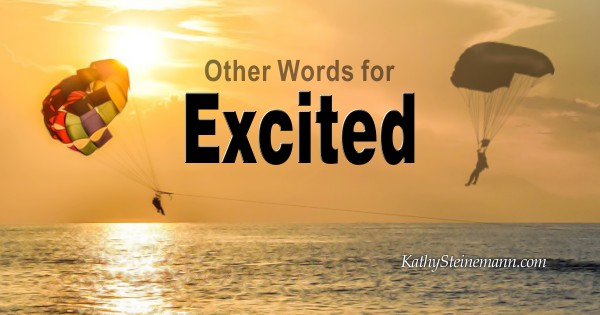
Why All the Excitement About Excitement ?
Edgar Allan Poe said, “I need scarcely observe that a poem deserves its title only inasmuch as it excites, by elevating the soul. The value of the poem is in the ratio of this elevating excitement.”
Wayne Dyer: “Van Gogh never made a penny in his entire lifetime. He painted because it was his soul, his excitement. It was what aligned him with his Source of being.”
Gene Roddenberry: “… excitement is not made of car chases.”
Readers yearn for excitement in books. This post will help writers create that feeling without overuse of excited or excitement .
Emotion Beats and Physical Manifestations
An excellent first approach when trying to describe an excited character is to show the excitement via body language and reactions such as the following.
- flashing eyes
- bright eyes
- dilated pupils
- frequent blinking
- initiating and maintaining eye contact
- a broad grin
- a dimpled smile
- a trembling chin
- a glowing face
- hyperventilating
- speaking rapidly
- clapping one’s hands
- hopping up and down
- grinning while raising one’s arms
- rubbing one’s palms together
- skipping instead of walking
- bouncing one’s feet while one is seated
- a rapid heartbeat (only obvious to POV character)
- excessive perspiration, especially if one is experiencing nervous excitement
If you need additional beats, consult a body language dictionary . (As an Amazon Associate, I earn from qualifying purchases.)
If you’re creating an action scene where brevity is crucial, or writing flash fiction with a tight word count, synonyms for excited might work best for you.
Heed the subtle connotations and excitement level implied by the following words.
A to G aflame, animated, ardent, aroused, atingle, avid, bouncy, bubbly, charged, eager, ebullient, elated, electrified, enlivened, enthusiastic, exhilarated, exuberant, fervent, fervid, feverish, fiery, fired up, frenzied, gaga
H to Z heated, hot, hyperactive, impassioned, keen, keyed-up, lively, overactive, passionate, peppy, perky, roused, sparkling, sparky, spirited, stimulated, stirred, stoked, thrilled, tickled, titillated, wired, wound-up, zealous
Similes and Metaphors
Figures of speech offer extraordinary opportunities to stimulate the imagination. Take care, though, to avoid purple prose.
You could liken a character’s emotions to the reactions of:
- a baby taking its first steps
- a cat that sees [a bird, its favorite treat, a mouse]
- a dieter who has achieved the “ideal” weight
- a lawyer whose client has just been acquitted
- a newly engaged bride-to-be
- a pilot making a first solo flight
- a writer who makes The New York Times Best Sellers list
- an actor who has just been awarded a prestigious role
- ants that have discovered a kid’s secret candy stash
Or create indirect comparisons like the following:
- a beast that keeps one awake at night
- a bottle of soda about to explode
- a bundle of kindling in one’s gut
- a glowing ember in one’s soul
- a lightning bolt that jolts one’s heart
- a river bubbling through one’s veins and flushing one’s face
- a wind of emotion
- an exhausting interval of passion
- an irrepressible [fount, spring]
- fireworks exploding in one’s chest
- the urge to dance tingling in one’s toes
Although excitement doesn’t have a color, characters who are excited might blush or flush. Conversely, nervous excitement might cause paleness.
Flushed skin colors beet red, blaze red, blood red, cherry-soda red, crimson, crab-apple red, flame red, flaming red, lobster red, neon red, radish red, scarlet, wanton red
Note that most of these colors are exaggerated. A person’s face won’t actually look beet red, for example, but the phrase would work for many narrators.
Pale skin colors alabaster, ash white, cameo white, chalky, china white, eggshell white, ivory, milky, parchment white, porcelain white, sheet white, specter white
See 1000+ Ways to Describe Colors for more options.
Excitement raises body temperature , which accentuates the odor of a character’s skin. Therefore, a person might smell like, reek of, or be redolent with the scent of:
A to W aftershave, baby lotion, baby shampoo, baby wipes, a barn, BO, body lotion, cleaning solution, deodorant, disinfectant, essential oils, a garage, garlic, hair conditioner, hair dye, hand sanitizer, hay, horses, kelp, a kitty litter box, laundry detergent, leather, licorice, neoprene, an old mattress, onions, perfume, perspiration, room deodorizer, shampoo, soap, unwashed clothes, vinegar, a wet dog
Consider the environment and activities of characters. Sometimes you can reveal their occupations or favorite hobbies by describing only their scent .
The Versatility of Verbs and Phrasal Verbs
Instead of saying that something excites a character, you might wish to choose a substitute word or phrase from this list.
A to T arouse, awaken, blow someone’s mind, breathe new life into, brighten, delight, electrify, energize, enthuse, exhilarate, fascinate, galvanize, grip, incentivize, inflame, inspire, inspirit, interest, intrigue, invigorate, jolt, light a fire under, motivate, move, pep up, pique, raise someone’s hair, rivet, rouse, stimulate, stir, thrill, tickle
Choose colloquialisms only if they suit your narrator’s voice.
Excitement ?
Another word might serve better. As with adjectives, pay attention to the level of emotion and the personality of your narrator or character before choosing any of the following nouns.
A to W ado, agitation, animation, brouhaha, bustle, buzz, chaos, disorder, dither, elation, ferment, frenzy, furor, fuss, hoo-ha, hubbub, mayhem, melee, moil, pandemonium, passion, pother, ruckus, stimulation, stir, thrill, titillation, to-do, turbulence, uproar, wildness
Well-chosen props augment a story by sparking new twists or subplots. What excites you? Would it excite your characters? Perhaps something from this list would.
B to G a book signing event, chocolate, a date with a famous person, finding out that [an ex, one’s mother, a significant other, a sister, a spouse] is pregnant, a first date, the first day [of a new book release, of school, of spring, on a new job], giving or receiving a gift, good news
H to W a high school prom, the release of [a Broadway show, a movie], a ride in [an experimental plane, a spaceship, a sports car, a submarine], travel to __________, a wedding, winning [an award, a contest, a football game, a hockey game, a race, a tennis match]
Discover more from KathySteinemann.com: Free Resources for Writers
Subscribe to get the latest posts sent to your email.
Type your email…
5 thoughts on “ 200+ Ways to Say “Excited”: A Word List for Writers ”
Kathy, your lists, have been a life-savor. I plan to purchase your books so I can delve deeper into better word choice. I can already see an improvement with my writing from some of your tips.
Although I should probably spell check my comments before I hit submit. Still working on that part. But again, thank you for all of your helpful tips.
Ha ha. My best proofreading is also after I press the Post Comment button. 🙂
Thanks for stopping by, Andrea, and I’m glad you find the lists helpful. Stay safe!
Hi Kathy, wow this was a brilliant post. Your book is on my list of priority purchases so I hope to buy it this month.
I am in the process of writing my memoir but I don’t want it to simply be a recollection of events but a catalyst for reflection, deep thinking, evaluation of the reader’s own life and inspiration as they sojourn with me through mine.
This post gave me lots of fresh ideas which I needed. I can’t even imagine how amazing your book is if this post is a snippet.
Thanks, Michelle! Good luck with your memoir, and stay safe.
Comments are closed.
+65 87491430

THE WRITE TRIBE
- Sep 30, 2023
How to describe excitement in creative writing
How to describe excitement in creative writing..
We have compiled a table of 10 phrases to describe excitement in creative writing. You can modify these for your composition writing.

Recent Posts
A fortunate escape composition for primary school
Model compositions Primary 2 English: Going to the wet market - By Adriel Koh
Model composition: Determination (Primary 4)

BRYN DONOVAN
tell your stories, love your life
- Writing Inspiration
- Semi-Charmed Life
- Reading & Research
- Works In Progress.
How to Describe Happiness: 100 Phrases

You’d think figuring out how to describe happiness would be easy…
but when you’re trying to think of how to express happiness in a sentence, it’s easy to draw a blank. That’s why I’m sharing this list of ways to describe happiness, excitement, and joy. I hope these happy phrases help with your novel, story, or whatever you’re writing!
When I shared my Master List of Ways to Describe Anger the other week, on my Facebook author page , one person told me she expected a paywall when she clicked. That was a pretty nice compliment! So I thought I’d do one on how to describe happiness, too. Most of the time, you can express emotions through internal monologue, dialogue, and actions. Once in a while, though, you run into the need to describe the feeling in the point of view of your character.
There are really infinite ways to convey emotion in writing. I have 100 ways here to write about happiness, joy, contentment, hope, and gratitude here. They’re not in any particular order — really, it’s just the order that I thought of them. 🙂
They aren’t all going to be ones you use personally, because every writer is different! Chances are, they’ll make you think of even more words and phrases.

How to Describe Happiness
his heart leaped up for joy
he felt a surge of happiness
I was paralyzed with happiness
their mood lifted
she was bursting with joy
he could hardly contain his happiness
his mood lightened
my spirits brightened
hope bloomed inside her
happiness glowed inside him
he felt a sudden flare of joy
I could barely conceal my delight
they were flabbergasted with joy
sunshine flooded her soul
his spirits were flying high
her hopes soared
she felt like her feet barely touched the ground
joy engulfed me
it cheered her soul
joy took hold of him
inside, she was smiling
she almost jumped for joy
Support My Site
If you like what I do, please support me on Ko-fi!
happiness overtook him
she took a defiant joy in it
happiness streaked through him like a comet
a quiet contentment spread through him
contentment filled her heart
happiness trembled inside of her
his heart dared to hope
happiness swelled within her
gratitude flowed through her
had she ever been happier in her life?
it elevated his mood
he couldn’t think of a time he’d ever been happier
their joy unfolded like a flower
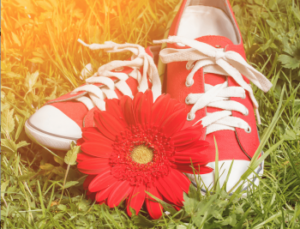
she felt a glimmer of happiness
he felt dizzy with excitement
joy rushed through me
my happiness was so intense it scared me
he thought he would die of joy
her heart was singing
she felt drunk with happiness
he was intoxicated with joy
his heart throbbed with happiness
she burned with a fierce joy
happiness crept over him
it was almost more happiness than she could take
he knew a profound joy
her happiness grew
I was wild with joy
happiness expanded inside him
they were suffused with happiness
joy sparkled inside her
happiness shimmered inside me
happiness danced through her thoughts
he almost collapsed with happiness
it raised his spirits
it brought my spirits up
contentment warmed her from within
happiness radiated through him
he’d never felt more alive
she felt fully and wonderfully alive
I was filled with joyful energy
she could’ve wept for joy
I wanted to shout for joy
he was weak with gratitude
his heart pounded with happiness
she savored the feeling of contentment
a sudden feeling of happiness surprised him
an unexpected happiness consumed her
happiness made me feel invincible
joy rippled through him
gratitude welled up inside her
he felt a flush of happiness
happiness resonated through him
she was transported with joy
it was almost too much happiness to bear
contentment tiptoed into her heart
he was overcome with happiness
he’d unearthed a greater joy than any he’d ever known
her spirits bounded higher
it brought him a ray of happiness
she felt a whisper of happiness
he felt an inkling of joy
she felt a stab of hope
satisfaction settled in his soul
happiness washed over her
his soul took flight
she felt in love with the whole world
he had no words for the gratitude he felt
she was buzzing with happiness
she felt like she was floating

he was in heaven
she was treasuring every moment
she surrendered to bliss
the weight lifted from my soul
he felt a solemn sense of happiness
joy bubbled up inside of her
his happiness overflowed
my heart almost broke with joy
I’m curious: if you read the whole list straight through, did it make you feel happier? It had that effect on me!
Either way, I hope you’re happy to have the list! And if you you like lists for writers, check out my book Master Lists for Writers, if you haven’t already!
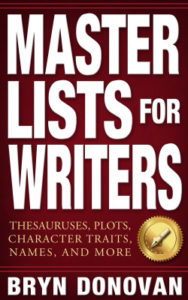
Do you have some ideas about how to describe happiness? Would you like to share an example of a description of happiness from your own writing? Please go ahead in the comments section below! Thanks for stopping by, and happy writing!
Related Posts

Share this:
46 thoughts on “ how to describe happiness: 100 phrases ”.
Bryn, your posts are always filled with such awesome information for the reader and writer in all of us! Thanks so much for taking time out of your busy life to do this. And, yes, I was smiling towards the end!
Hi, Marcia! Oh, I’m so glad you like them. 🙂
Yup! U r right!
I love these lists. I print them out and use them regularly. They help inspire and find the right words. I use them as a cheat sheet.
Constance, I’m so glad they’re helpful! I do think of them as “cheat sheets” (except it’s not really cheating, of course!)
These are great! And SO helpful!! <3
Hi, Caro! Aw thanks. Hope you’re having a great week!
You helped me improve in my composition a lot.THANK YOU!???
I absolutely love your lists. I refer to them all the time when I find myself needing inspiration or repeating too many phrases. Thank you so much for sharing.
Ohh, thank you friend. 🙂
Wonderful list! Thank you, Bryn.
Thank you so much. I’m so happy that I’ll no longer spend minutes trying to convey a simple emotion and it’s all thanks to you!
Thanks, Bryn. These are great descriptions. 🙂 — Suzanne
Thanks Bryn, I’ve saved this and will use it often. Happiness has crept over me! Cary
How amazing! Where do you get all these ideas from?
Aw thanks! It took me a long time. 🙂
How long????
Thanks for this wonderful list about happiness
I was wondering on Google and I found this!!! Such a lovely article ? I too write on aintyouliving.blogspot.com from India. Hopefully you’ll find something interesting on my blog. Well, love from India ♥️
This was so useful! I started using a few in my everyday writing and it’s made a huge difference
This is a great post and a huge help for writers like myself. Amazing information! Thank you.
Hi Margie! Thanks—I am so glad you found it useful!
Hi! I kind of used this in my writing. Thank you so much!
What I wrote: The room erupted in cheers. People were laughing and smiles were everywhere. Thank GOODNESS! I could barely conceal my happiness. Joy and relief welled up inside of me, and I sighed. I let out the deep breath that I had been holding onto for what seemed like a long time. My job here was done and my dream… had come true.
Ashlyn, so glad it helped. And I love what you wrote! Thanks for sharing!
Wow! Amazing ?! I LOVE it!!!
what an amazing list of words, enjoyed it thank you!!
they helped me a lot in my creative writings.
Wow,Bryn! Thank you ?! I use it a lot on my Compositions!
OMG this is priceless, thank you thank you thank you thank you! Bless your soul for this.
thx, my child now gets high marks for her compo
- Pingback: How to get rid of depression in 2020 and strongly learn the best from it even if it doesn't call for the past - Grow Your Health
awww you are soo sweet,you are helpful you are a role modelll:)
thanks this really helped with my compo ???
my god! Amazing stuff!, huge round of Applause!!
I am Sheema Suroor Mohammad
Thanks heaps great list!!
Thank you. This is exactly what i was looking for. Please note that you are helping emerging authors with this your list that i personally refer to as inexhaustible list.
That is an impressive list! Thanks for sharing!
- Pingback: Best sites for writers – You’re missing out if you aren’t using any of these - Shades of Zarah
Happy to learn happiness in so many words, Wonder how it comprehends so wide! Thank you so much.
this really helped me and i fucking hate you
- Pingback: How to Describe Happiness: Conveying Joy in Words
- Pingback: How to Describe Happiness: Conveying Joy in Words – Boomers
I found this website a couple of days ago, and let me tell you, I love it so much! These are so helpful when trying to make things sound interesting without using the same phrases over and over again! Thank you for making these!
Simply amazing. Very well listed. we do find words but not phrases. And you have done an fantastic work by putting them in phrases and Its not just saved our time but you made me learn a many of them. Thank you so much.
Leave a Reply Cancel reply
This site uses Akismet to reduce spam. Learn how your comment data is processed .
Discover more from BRYN DONOVAN
Subscribe now to keep reading and get access to the full archive.
Type your email…
Continue reading
12 Ways To Convey Emotion in Your Writing

Table of contents

Alana Chase
Writing with emotion is an important skill for all writers — bloggers, novelists, copywriters, journalists, students, and many others. It can help you connect with your readers, persuade your audience, or simply bring your ideas to life with flair.
But you might be unsure how to do it or what “emotive writing” really is.
In my 11-year career as an editor and writing coach, I’ve guided numerous students to become well-versed in emotive writing — writing that stirs up genuine emotions and captivates readers.
In this article, I’ll share 12 ways to infuse your work with emotion. I’ve also included examples to illustrate the difference between emotive and non-emotive writing, plus a bonus tip to help you succeed.
Key takeaways
- Emotive writing enables you to connect with or persuade your audience by eliciting genuine emotions.
- You can use various techniques to convey emotion in writing — from employing sensory language and sharing anecdotes to using strong verbs and adjusting your tone.
- AI tools like Wordtune can help enhance your writing and ensure you strike the right chord with your audience.
12 tips for writing with emotion
All that stands between you and emotive writing are some essential tips and tricks. Let’s explore my top 12 below.
Tip #1 - Use active voice
Choosing active voice (where a subject performs an action) over passive voice (where an action is done to a subject) enhances the emotional impact of your writing by emphasizing the person or thing responsible for the action.
For example:
Passive voice: “Yvette was betrayed by Marcos.”
Active voice: “Marcos betrayed Yvette.”
Here, active voice places responsibility firmly on Marcos, making his betrayal of Yvette more impactful. This makes it easier for readers to sympathize with Yvette and feel anger toward Marcos.
The easiest way to nail active voice is to always put the “doer” (subject) at the start of the sentence. Follow up with the action (verb), then the receiver of the action (object).
“Mika (subject) longed for (verb) the familiar sights and sounds of her hometown (object).”
AI tip: Wordtune can help you switch from passive to active voice in seconds. Highlight a sentence and tap the Rewrite button in Wordtune’s Editor to generate a list of suggested replacements.

Get Wordtune for free > Get Wordtune for free >
Tip #2 - Use sensory language
You can evoke specific emotions with your writing by using language that plays on the five senses (touch, smell, sight, taste, and sound). Sensory language also helps create vivid images in the reader’s mind, allowing them to better connect with what you’re saying.
For example, writing “the rough texture of his sandpaper-like hands” can convey discomfort and irritation. Meanwhile, “the sweet aroma of fresh-baked cinnamon rolls” can communicate comfort and joy, and “the incessant, rhythmic ticking of the clock” can evoke anxiety.
On a similar note, avoid stating emotions outright. Instead, demonstrate emotions through actions, body language, experiences, or atmospheric details — show, don’t tell. This makes for a more engaging reading experience.
For example: “I felt terrified.” → “My legs trembled violently and a chill ran down my spine as I climbed up the rusty ladder. With each creaky step, the floor below me seemed to grow further away.”
Tip #3 - Incorporate similes, metaphors, and symbols
Similes (which compare two things) and metaphors (which equate one thing to another) are powerful tools for making your writing more emotive.
Here are some examples:
- Simile: “Her smile was like sunshine after rain , brightening everyone’s day.” This evokes positivity and creates striking images in the reader’s mind.
- Metaphor: “Your potential is a dormant volcano , waiting to erupt with success.” This inspires feelings of inspiration and eagerness. When used in a marketing or advertising context, it can persuade the reader to take action — e.g., by buying your product or signing up for your service.
Additionally, you can incorporate symbols to represent emotions throughout your writing. For example, a wilting flower can symbolize fading hope, while a lighthouse beacon can communicate determination and resilience.
Tip: Avoid clichés in symbolism — e.g., a lightbulb to signify an idea — to prevent your work from sounding dry and predictable. Instead, choose symbols that are unique and relevant to your piece of writing.
Tip #4 - Add personal anecdotes
Share personal experiences from your life to make your writing resonate emotionally. For example, if you’re writing about the importance of hard work, you could tell a story about a time you overcame a difficult challenge through perseverance.
Anecdotes like these provide a personal touch that draws readers in and encourages them to connect with your writing.
Tip #5 - Opt for emotive adjectives
Emotive adjectives demand attention and elicit strong emotional reactions in readers. “Breathtaking” conjures feelings of awe and wonder, for instance, while “serene” evokes peace and tranquility, and “menacing” conveys fear.
Using emotive adjectives can help you persuade your audience. For example, if you’re selling a product, you could use adjectives such as “cutting-edge” or “top-rated” to generate curiosity and give the product a positive appeal.
Apple uses tons of emotive adjectives in its ad copy, describing the iPhone 15 Pro’s Dynamic Island tool as “a magical way to interact with iPhone.” The company used adjectives like “phenomenal,” “amazing,” “incredible,” “industry-first,” and “aerospace-grade” to detail the phone’s other features.
These words all help evoke feelings of admiration and excitement within Apple’s existing audience and potential new customers.

Tip #6 - Replace adverb phrases with strong verbs
Adverb phrases tend to use vague terms like “softly” or “quickly”. Replacing adverb phrases with strong verbs in your writing allows readers to experience the action more directly, encouraging a greater emotional response.
- “walked slowly” (adverb phrase) → “crept” (strong verb, evokes anticipation or fear)
- “cried loudly” (adverb phrase” → “wailed” (strong verb, conveys intense sorrow)
- “looked angrily” (adverb phrase) → “glared” (strong verb, suggests hostility)
Tip #7 - Use white space strategically
White space — the empty areas between lines and paragraphs on a page — influences the pacing of your writing. Lots of white space gives readers “breathing room” and speeds up reading. On the other hand, minimal white space slows readers down and encourages them to absorb your words.
Experimenting with white space lets you control your writing’s emotional rhythm and impact.
For example, place a sentence on its own line to create a sense of importance and amplify its emotional weight. Or, use lots of short paragraphs to generate anticipation or long paragraphs to convey seriousness and intensity.
Tip #8 - Vary your sentence structure
You can convey a range of emotions by switching up the structure and length of your sentences.
Short sentences with simple structures can suggest stress, danger, or excitement. Meanwhile, longer sentences with more elaborate structures can imply longing, sadness, admiration, or regret.
Let’s look at two examples from The Great Gatsby:
- Short sentences: “She narrowed her eyes and shivered. Lucille shivered. We all turned and looked around for Gatsby.”
- Long sentences: “It was one of those rare smiles with a quality of eternal reassurance in it that you may come across four or five times in life. It faced — or seemed to face — the whole eternal world for an instant and then concentrated on you with an irresistible prejudice in your favor.”
Use one or the other — or a mix of both — depending on the emotion(s) you want to infuse into your writing.
AI tip: Condense or lengthen your sentences in a snap using Wordtune’s Shorten and Expand features.

Tip #9 - Strike the right tone
Tone defines the mood of your writing — relaxed, serious, humorous, friendly, etc. — so aligning it with the emotion(s) you want to convey is key.
Say you want to evoke joy in your writing. Ensure your tone is lively and filled with positive language. For example, instead of writing, “I was happy,” say, “My heart was bursting with happiness, and my skin tingled with elation.”
Or, perhaps you want to convey a sense of urgency in a persuasive piece. Go for an authoritative tone, using formal language and clear, assertive statements. For example: “Time is of the essence. Failure to act now will have dire consequences.”
AI tip: With Wordtune, perfecting tone of voice is easy. Open the Wordtune Editor, begin writing (or paste your work in), highlight the text, and tap the Casual or Formal button. Wordtune will generate several options to make your writing more conversational or more serious.

Tip #10 - Incorporate humor
Humor can help you convey many emotions in your writing — from happiness to empathy and everything in between. (Using humor is also one of the best ways to tailor your writing for a Gen Z audience and make your social media content more relatable.)
Here are a few ways to do it:
- Incorporate puns and other wordplay. For example: “After an hour waiting in line for the rollercoaster, I felt like I’d been competing in a show called Survivor: Theme Park Edition .” This highlights the narrator’s frustration and exhaustion through a humorous play on language.
- Sprinkle in sarcasm, irony, or satire. Comment on society’s quirks or the strangeness of everyday life to evoke amusement and introspection. Use sarcasm — e.g., “Another flat tire: just what I was hoping for!” — to express emotions like irritation, frustration, or doubt.
- Surprise the reader. Drop a witty remark or punchline when the audience least expects it — for example, after a tense scene or moment of danger. This contrast can make both the lighthearted and poignant moments in your writing more impactful.
Tip: Be mindful of your piece’s tone and context to ensure the humor lands well. If the humor doesn’t fit, leave it out (and use some of the other tips on this list instead).
Tip #11 - Tap into nostalgia
As in life, nostalgia is a potent force in writing. It can stir feelings of comfort, happiness, sentimental longing, or sadness in readers.
You can also use nostalgia to elicit specific emotions and persuade an audience. In fact, this is a popular marketing technique. Advertisers and copywriters will create nostalgic scenes that remind consumers of fond memories and motivate them to buy a product.
Below are some ways to tap into nostalgia in your writing.
- Use cultural references to jog readers’ memories of bygone eras. This is especially effective when your references are tied to certain events and trends, such as movie releases, music movements, or historical moments.
- Explore common human experiences such as childhood friendships, family gatherings, and milestones like first heartbreak. Create new scenes that dive into these moments, or share personal anecdotes from your past that mirror these experiences.
- Use slang from specific eras (e.g., “bodacious” or “gnarly” from the ‘80s) to transport readers back in time and evoke emotions they associate with the period.
- Implement sensory language when describing the past . For instance, you might describe the taste of a dessert you once loved, the sound of a familiar song, or the scent of your childhood home.
Tip #12 - Use contrast
Amplify the intensity of the emotions in your writing by contrasting “highs” (positive emotions) with “lows” (negative emotions). Juxtapose emotions like joy and sorrow, love and heartbreak, or fear and excitement to make each feel more impactful.
You might also explore contrasting images, settings, or time periods to evoke emotions. For example, depicting a bright, sunny day following a dark, stormy night can convey hope. Also, moving from the past to the present can underscore, for instance, a main character’s longing for the way things used to be.
Bonus tip: Go slow and be sparing
Emotions often hit harder in writing when there’s a build-up to them. For example, hard-won happiness feels more impactful than sudden joy, and lingering grief resonates more than occasional sadness.
So, take time crafting your narrative and laying the emotional groundwork — really “earn” the feelings . Readers will be more likely to invest in and connect with your writing when you do.
Finally, remember that emotive language is like spice : it can add fantastic depth and flavor, but too much of it can overwhelm the senses. Use it sparingly to ensure readers are drawn in, not put off.
Knowing how to convey emotion in your writing helps you pack a punch with words and connect with your audience — whether you’re looking to tug at their heartstrings or convince them of something.
With the tips outlined in this guide (and some help from Wordtune’s tools), mastering emotive writing can be easy and fun. You can play on readers’ senses with descriptive language, share personal anecdotes, incorporate emotive adjectives, use humor, and more.
Continue leveling up your writing by exploring our guides on rewriting sentences so they don’t sound bland and proofreading to keep your work flawless .
What is it called when you use emotion in writing?
Using emotion in writing is called “emotive writing.” The writer uses expressive language and storytelling techniques to convey feelings, evoke emotional responses, and create a lasting impact on readers.
How do you describe your emotions in writing?
In writing, you can convey your emotions by using descriptive, sensory language and sharing personal experiences.
What are emotive adjectives?
Emotive adjectives are descriptive words that evoke a specific emotional response from readers. Examples include “appalling,” “heartbreaking,” “exhilarating,” “thrilling,” and “enchanting.”
Share This Article:
%20(1).webp)
8 Tips for E-commerce Copywriting Success (with Examples!)
.webp)
The Brand Strategy Deck You Need to Drive Social Media Results + 5 Examples

Grammarly Alternatives: Which Writing Assistant is the Best Choice for You?
Looking for fresh content, thank you your submission has been received.
Start your free trial to access brainstorming lists of body language, thoughts, vocal cues, and sensations for over 130 emotions. Writing can be easier!
ANTICIPATION
APPREHENSION
CONNECTEDNESS
DEFENSIVENESS
DESPERATION
DETERMINATION
DEVASTATION
DISAPPOINTMENT
DISCOURAGEMENT
DISILLUSIONMENT
DISSATISFACTION
EMASCULATION
EMBARRASSMENT
FEARLESSNESS
FRUSTRATION
HOMESICKNESS
HOPEFULNESS
HUMILIATION
INDIFFERENCE
INDIGNATION
INTIMIDATION
NERVOUSNESS
OVERWHELMED
PEACEFULNESS
POWERLESSNESS
RESIGNATION
SATISFACTION
SCHADENFREUDE
SELF-LOATHING
UNAPPRECIATED
UNCERTAINTY
VENGEFULNESS
VINDICATION
VULNERABILITY
WISTFULNESS
WORTHLESSNESS
MINI LESSON
No two characters should express emotion the same way. To avoid reusing tired gestures or slipping into telling, use this thesaurus to brainstorm fresh body language, visceral sensations, and thoughts to express your character’s emotions in ways that make sense for them.
EMOTION AMPLIFIERS
BEING STUCK
BEREAVEMENT
BRAINWASHING
CHRONIC PAIN
COGNITIVE BIAS
COGNITIVE DECLINE
COMPETITION
CONFINEMENT
DEHYDRATION
DISTRACTION
HORMONAL IMBALANCE
HYPERACTIVITY
INSTABILITY
INTOXICATION
MALNUTRITION
MENTAL HEALTH CONDITION
MORTAL PERIL
PANIC ATTACK
PHYSICAL DISORIENTATION
PHYSICAL HEALTH CONDITION
SENSORY OVERLOAD
SLEEP DEPRIVATION
SUBSTANCE WITHDRAWAL
The shortcut for this page is t+e . For a complete list of shortcuts, see our Accessibility guide.

Writing Tips: How to Evoke Arousal Through Words Crafting a Descriptive Story
Arousal can be described as a heightened state of physical and mental energy that often manifests itself in butterflies, accelerated heart rate and sweaty palms.
How To Describe Arousal In Writing
When describing arousal in writing, it is important to consider the complexity of your text (perplexity) and the variation of your sentences (burstiness). When writing, think about how you can convey an aroused state in a way that is both captivating and understandable. To increase perplexity, try to include some longer or complex sentences that will draw the reader in. To create burstiness, intersperse shorter sentences throughout. Creating a unique pattern of longer and shorter sentences will make the writing more interesting to the reader. Furthermore, consider using figures of speech or figurative language to create an emotional reaction. Incorporating these tools will make your description of arousal come alive.
Ways To Describe Arousal In Writing
Writing about arousal can be a tricky task since it is often based in very subjective experiences. However, there are some techniques writers can use to help paint a vivid picture of the emotions and sensations aroused in a character or reader. Expressing emotional arousal through descriptive language can create a palpable atmosphere on the page and evoke strong feelings in the reader. Physical indicators of arousal can also be used to give an even more detailed description of the scene.
Descriptive Language For Writing About Arousal
Verbs are a great way to express physical sensations associated with arousal, such as trembling, quivering, or fluttering. Adjectives like intense, passionate, and feverish can also be used to describe heightened emotions in a character or situation. When writing about arousal, it is important to avoid cliches and instead focus on creating unique descriptions that will draw readers into the world of the story.
Mental States To Show Arousement In Writing
Fear and anxiety are two mental states that can be used to convey arousal in writing. These feelings often manifest physically in characters, such as trembling hands or beating hearts. Apprehension and panic can also be used to create tension and immediacy in a scene. It is important for writers to pay attention to how these mental states affect characters’ physical reactions so that they don’t become too abstract for readers to understand.
How To Paint A Picture With Words To Show Arousal In Writing
Visual imagery is one of the most powerful tools writers have for conveying emotion on the page. Descriptions of characters’ facial expressions, body language, and gestures can help readers understand what they are feeling without explicitly stating it. Symbolic imagery can also be used to convey sensations associated with arousal such as heat or electricity without resorting to cliches like sparks flying between two people.
Metaphors And Similes For Expressing Molten Passion In Writing
Similes like as hot as fire and as electric as lightning are effective ways for writers to describe intensity of feeling within a scene without resorting to overly dramatic descriptions. Metaphors such as describing love as an infinitely deep ocean or passion as an unstoppable force of nature can also help writers intensify moods of passion without losing subtlety or nuance in their writing.
Explaining Sensations Caused Due To Arousement In Writing
Writing can be a powerful tool for conveying the sensations caused by arousal. Through the use of words, the writer can express the tingles of excitement, the intensity of fear, and the rush of joy that may accompany moments of heightened emotion. By carefully crafting language to capture a particular sentiment, the reader is able to experience these sensations along with the author.
When writing about arousal, it is important to consider which words will best capture and convey a given sensation. Tactile sensations such as goosebumps or shivers can be described with words like tingly or prickling. Auditory stimulations such as a pounding heartbeat should be described using phrases like pounding or thudding.
Word Choices That Can Make Writing Come Alive With Feelings Of Heightened Excitement
To make writing about arousal come alive with excitement, unconventional language choices are essential. Dramatic phrases such as the thrill of anticipation or anxiety bubbling up within can create tension in the reader and evoke a feeling of exhilaration. Words that evoke an emotional response are also helpful in conveying heightened emotions; for example, words like exhilarating or dreadful can help to bring out powerful emotions in both the writer and reader.
Power Words That Enhance The Impact Of Writing About Excitement
In addition to evocative language choices, certain buzzwords related to excitement can also enhance the impact of writing about arousal. Words like thrill, adrenaline, and tension all have connotations that can increase the intensity of writing about intense emotions. Similarly, expressions like heart pounding or breathless anticipation are useful in creating an atmosphere of suspense and anticipation in readers.
Descriptors That Can Help Describe Delightful Alarm Or Frightening Fear Caused By Arousement
Finally, when attempting to describe delightful alarm or frightening fear caused by arousal in writing, descriptive words that precisely illustrate euphoria or fear should be used. For instance, expressions like euphoric bliss and paralyzing terror are useful for conveying these sensations accurately and vividly. Colored expressions such as a dizzying rush of joy or a “chilling sense of dread” are also helpful in precisely describing fearful or pleasurable reactions to arousal.
FAQ & Answers
Q: What Are Ways To Describe Arousal In Writing? A: Ways to describe arousal in writing include expressing emotional arousal with descriptive language, mental states to show arousement, painting a picture with words to show arousal, metaphors and similes for expressing molten passion, explaining sensations caused due to arousement, word choices that can make writing come alive with feelings of heightened excitement, power words that enhance the impact of writing about excitement, and descriptors that can help describe delightful alarm or frightening fear caused by arousement.
Q: What Are Verbs For Describing Arousal? A: Verbs for describing arousal include quiver, throb, palpitate, pulse, swell, undulate, surge, vibrate.
Q: What Are Adjectives For Describing Arousal? A: Adjectives for describing arousal include aroused, stimulated, electrified, aroused from within/without.
Q: How Can I Paint A Picture With Words To Show Arousal In Writing? A: You can paint a picture with words to show arousal in writing by using visual imagery and symbolic imagery. Visual imagery involves using metaphors and similes to create vivid images in the readers mind while symbolic imagery involves using symbols or objects to represent emotions.
Q: What Are Metaphors And Similes For Expressing Molten Passion In Writing? A: Metaphors and similes for expressing molten passion in writing include comparing feelings of arousal to being like fire by saying “his heart was on fire” or “she felt her skin burn with desire.” Other similes could be “he was as tense as a bowstring” or “her breathing was as rapid as hummingbird wings.” Metaphors could include saying “his heart raced like horses” or “she felt her veins turn into rivers of pleasure.”
In conclusion, writing about arousal can be challenging but also rewarding. It is important to make sure that the language used is appropriate and that any physical descriptions used are done so in a tasteful and respectful way. Arousal can be described in a variety of ways, from the subtle to the explicit. Ultimately, it is up to the writer to decide how much detail they want to provide when describing arousal in their work.
Author Profile

Latest entries
- July 28, 2023 Popular Games Learn a New Language Easily With No Man’s Sky Practice Language
- July 28, 2023 Blog Are You The Unique Person POF Is Looking For? Find Out Now!
- July 28, 2023 Blog Why Did ‘Fat Cats’ Rebrand and Change Their Name? – Exploring the Reasons Behind a Popular Name Change
- July 28, 2023 Blog What is the Normal Range for an AF Correction 1 WRX?
Excitement Adjectives: Stunning Examples for Description
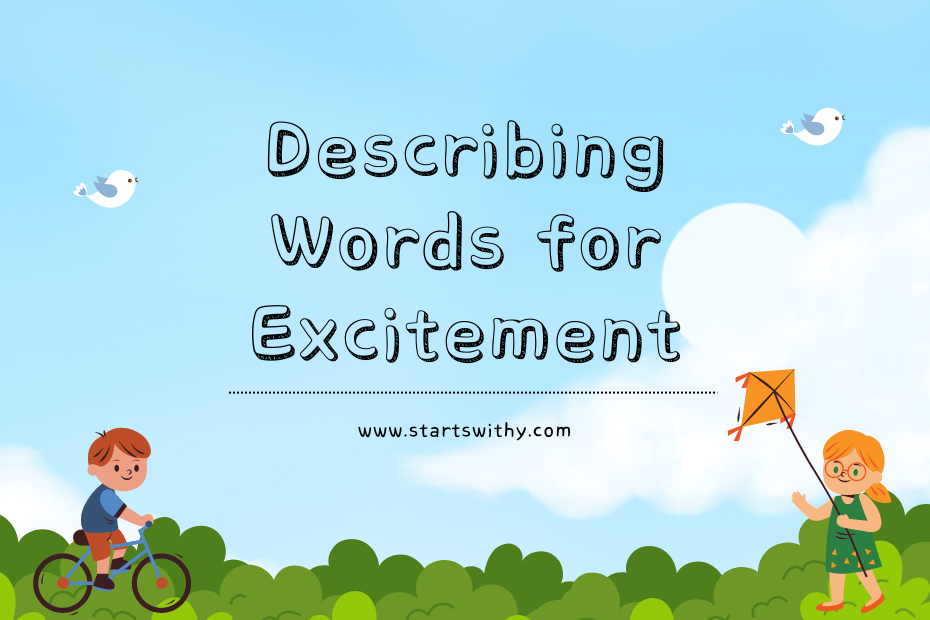
Are you ready to dive into a world of thrilling emotions and heart-pounding experiences? In this article, I’ll be sharing a list of adjectives that will help you vividly describe the feeling of excitement. Whether you’re writing a captivating story, crafting an engaging blog post, or simply looking to expand your vocabulary, these adjectives will add a burst of energy to your writing.
Table of Contents
How to Describe excitement? – Different Scenarios
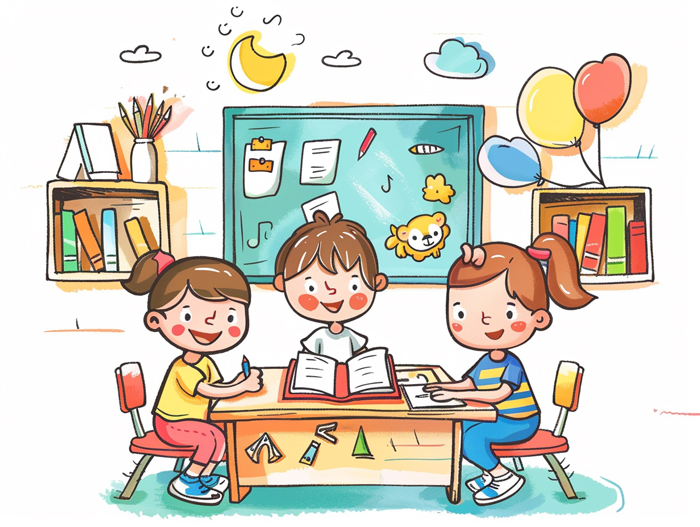
Remember, the key to describing excitement is to choose words that evoke the emotions and sensations associated with the feeling. By incorporating these adjectives into your writing, you can capture the essence of excitement and transport your readers into your world.
Now that you have a better understanding of how to describe excitement in different scenarios, go ahead and experiment with these adjectives in your own writing. Let the words flow and watch as your readers become engrossed in the exhilarating world you create. Happy writing!
Note: This section is a middle part of the ongoing article and should not contain a concluding paragraph.
Describing Words for excitement in English
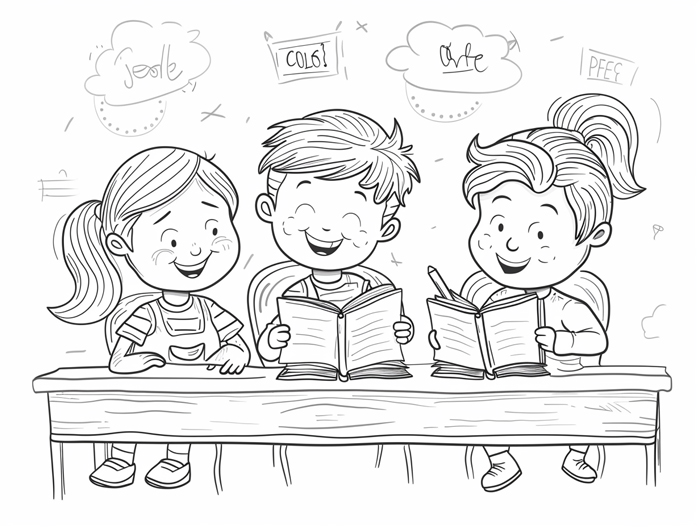
Remember, using these descriptive words allows you to paint a vivid picture for your readers, engaging them in the exhilarating world you’re creating. Experimenting with these adjectives will bring your writing to life and immerse your readers in the excitement of the moment.
Adjectives for excitement
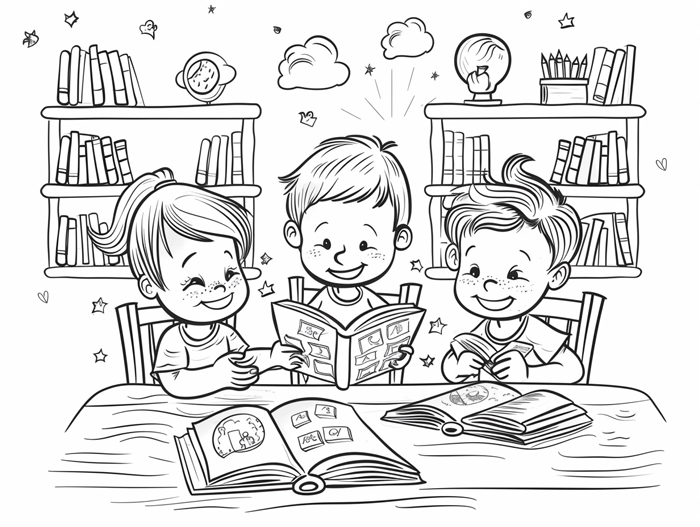
Positive Adjectives for Excitement
| Adjective | Example Sentence |
|---|---|
| Thrilling | The roller coaster ride was . |
| Exhilarating | The view from the top of the mountain was . |
| Electrifying | The energy in the crowd was . |
| Energetic | The dance floor was full of moves. |
| Heart-pounding | The suspenseful movie had my heart . |
Negative Adjectives for Excitement
While excitement is generally associated with positive emotions, there are times when it can have a negative connotation. Here are some adjectives that capture the darker side of excitement:
Here’s a definition list with examples:
Anxious : The excitement of the upcoming test made me feel anxious .
Overwhelmed : The sheer magnitude of the event left me feeling overwhelmed with excitement.
Restless : The restless excitement kept me up all night, unable to sleep.
Synonyms and Antonyms with Example Sentences
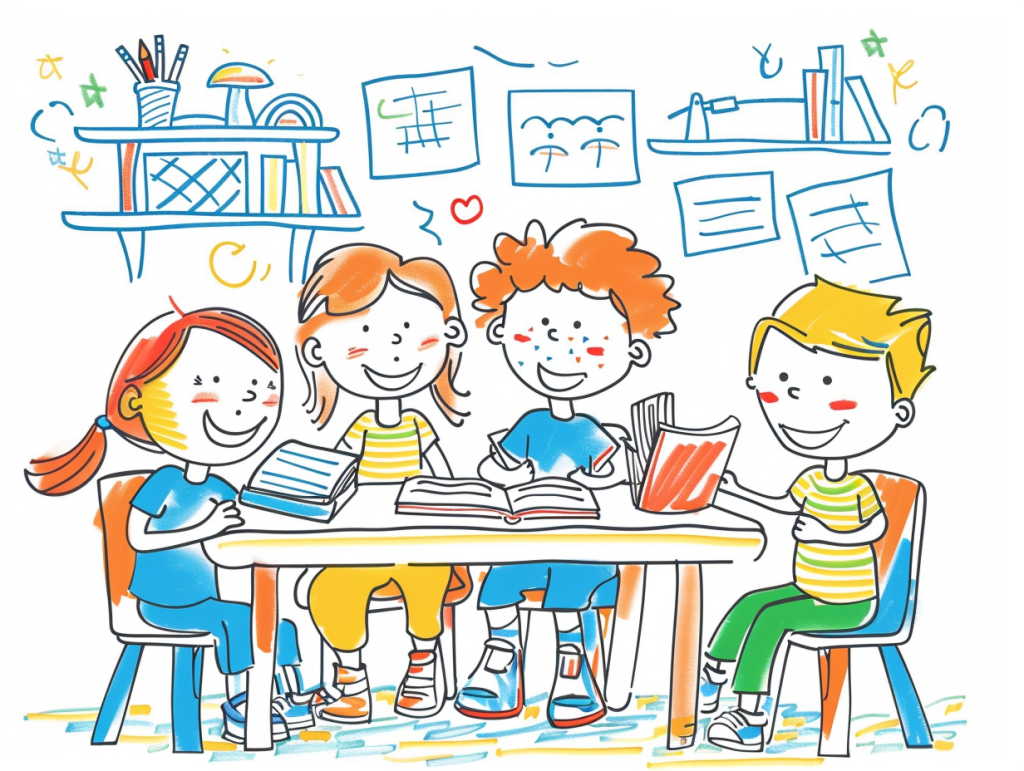
Synonyms for Excitement
When it comes to describing excitement, there are numerous adjectives that can help create a vivid picture in the reader’s mind. Here are some synonyms for excitement:
Antonyms for Excitement
While excitement is often associated with positive emotions, there are also negative adjectives that capture the darker side of this feeling. Here are some antonyms for excitement:
Remember, choosing the right adjectives to describe excitement can greatly enhance your writing and engage your readers. Try using these synonyms and antonyms in your own writing to create a dynamic and captivating experience.
From the exhilarating rush of a thrilling adventure to the electrifying energy of a live performance, we have discovered a plethora of descriptive words to enhance our writing. Adjectives such as heart-pounding, breathtaking, and adrenaline-fueled paint vivid pictures in the minds of our readers, allowing them to feel the excitement alongside the characters or events being described.
On the other hand, we have also explored antonyms for excitement, such as anxious and restless, which can add depth and contrast to our writing when appropriate.
So, let’s embrace the power of words and use these adjectives to infuse our writing with the energy and excitement it deserves.
Related Posts
Describing blood: adjectives with examples, adjectives for age: describing words & examples, adjectives for fight: examples and describing words.
When it comes to describing a fight, finding the right… Read More » Adjectives for Fight: Examples and Describing Words

How to Show Happiness in Writing (100+ Ways & Examples)
From the moment I picked up a pen, I knew my stories needed more than just plots and characters.
They needed the heartbeat of happiness.
Through trial and error, I’ve found ways to weave joy into the fabric of my narratives.
I’ve used these methods to describe happiness in several published novels and numerous short stories.
Here Is How to Show Happiness in Writing
Show happiness in writing by using vivid words like “ecstatic,” descriptive phrases such as “bursting with joy,” and crafting scenes that capture laughter, smiles, and the warmth of human connection. Convey happiness through characters’ actions, achievements, and shared moments of joy.

Table of Contents
Ready to light up your words with joy?
Let’s get started by going over the types of happiness to describe in writing.
Types of Happiness in Writing
Before you describe happiness in writing, you need to understand all the different varieties.
Let’s go over the major types of happiness in writing:
- Euphoric happiness
- Contented happiness
- Anticipatory happiness
- Reflective happiness
- Shared happiness

Euphoric Happiness
This type of happiness is about those peak moments of joy that feel almost overwhelming.
In writing, it’s when your characters experience a high so intense, that it’s almost transcendental.
Think of moments like winning a long-sought-after award, reuniting with a loved one, or achieving a dream against all odds.
These are the moments that leave your characters (and readers) breathless, their hearts pounding with unadulterated joy.
Contented Happiness
Contented happiness is quieter, more like a gentle stream than a roaring waterfall.
It’s found in the small, everyday moments that fill life with warmth and satisfaction. In your writing, it’s the peaceful morning routines, the comfortable silences between friends, or the serene end of a day well spent.
It’s less about the highs and more about a deep, sustaining sense of well-being.
Anticipatory Happiness
The excitement of looking forward to something wonderful gives this type of happiness its unique sparkle.
It’s the countdown to a special event, the planning of a surprise, or the hopeful dreams of what the future might hold.
In writing, use anticipatory happiness to build tension and excitement, showing your characters dreaming, planning, and yearning for what’s to come.
Reflective Happiness
This is the joy found in looking back and appreciating the journey.
It’s a type of happiness that comes with a tinge of nostalgia, a bittersweet acknowledgment of growth and change.
In writing, reflective happiness can be shown through characters reminiscing about past adventures, learning from their experiences, or finding peace with their past.
Shared Happiness
Happiness is often magnified when shared.
This type involves the joy of seeing someone else happy, of shared jokes, communal achievements, or the simple act of giving.
In writing, it’s the celebrations that bring communities together, the successes enjoyed as a team, or the laughter that bonds characters closer than ever before.
10 Ways to Show Happiness in Writing

Here are ten creative ways to do just that, each with a distinctive flavor of happiness.
With each method, I’ll give you 10 examples to really help you understand how to apply the strategy in your own stories.
1) The Laughter Echo
Laughter is contagious, and using it in your writing can instantly light up a scene.
But it’s not just about saying “they laughed.” It’s about describing the sound of laughter, the way it fills a room, catches someone by surprise or bubbles up from deep within.
Use laughter to show characters’ personalities, to ease tension, or to bond groups together.
- A giggle that turns into a full-blown belly laugh.
- Laughter that sounds like music, lifting the spirits of everyone who hears it.
- A snort of laughter at an unexpected joke.
- Silent chuckles shared between friends in a serious setting.
- Laughter that echoes through a house, making it feel alive.
- A character who laughs with their whole body, shaking with joy.
- A sarcastic quip that leads to shared amusement.
- Laughter that breaks the ice in a tense situation.
- A surprise tickle fight that ends in breathless laughter.
- The warm, infectious laughter of a loved one over the phone.
2) The Smile Spectrum
Smiles can convey a world of emotions, from shy, tentative smiles to beaming grins that crinkle the eyes.
In your writing, use a variety of smiles to show different shades of happiness.
Describe the way a smile transforms a face, how it feels to smile after a long day of sadness, or the effect of someone’s smile on those around them.
- A slow smile that spreads like sunrise.
- Smiles exchanged over a cup of coffee.
- A grin that’s all teeth and joy.
- The small, secret smile of inner amusement.
- A smile that lights up the room, drawing people in.
- Smirking at a private joke.
- A smile of relief after overcoming a challenge.
- The proud smile of accomplishment.
- A bashful smile at a compliment.
- Beaming at a friend across a crowded room.
3) Joyful Gestures
Joy doesn’t always need words.
Sometimes, it’s in the actions, the little gestures that say more than sentences ever could.
Think about the ways your characters show their happiness through what they do, not just what they say.
It could be the way they skip instead of walk when they’re excited, or how they can’t stop fidgeting with happiness.
- Dancing alone in the kitchen to a favorite song.
- Jumping up and down when receiving good news.
- A spontaneous hug that lifts someone off their feet.
- Clapping hands together in glee.
- A high five that turns into a handshake, then a hug.
- Making a loved one their favorite meal just because.
- Drawing happy faces on steamed-up windows.
- Leaving little notes of appreciation for others to find.
- A playful wink across the room.
- Twirling in a dress or skirt, caught up in a moment of pure bliss.
4) The Euphoria of Success
Capturing the moment of achievement in your writing can be a powerful way to convey happiness.
This isn’t just about winning; it’s about the journey to that win, the struggles overcome, and the final, triumphant realization of a goal.
It’s the euphoria that sweeps over your characters, leaving them (and your readers) breathless with joy.
- Crossing the finish line after months of training.
- The final piece of a puzzle clicking into place.
- A standing ovation after a performance.
- The flush of pride from a job well done.
- Tears of joy when a long-term goal is reached.
- A victory dance after a hard-earned win.
- Signing off on a project that took years to complete.
- The moment of silence before a crowd erupts in cheers.
- The overwhelming relief and happiness of passing a difficult test.
- A toast to celebrate the culmination of effort and dreams.
5) Serene Contentment
Not all happiness is loud or exuberant.
Some of the most profound joy is quiet, a deep river of contentment that runs through your characters’ lives.
Show this through scenes where little happens externally, but internally, your characters are at peace with the world and themselves.
- Watching a sunset in silent appreciation.
- The warmth of sipping a hot drink on a cold day.
- The comfortable silence between friends.
- A contented sigh after a satisfying day.
- Finding the perfect spot to read in a sunbeam.
- The gentle caress of a breeze on a warm day.
- The quiet hum of nature on a walk.
- The soft glow of candles in a tranquil room.
- Lying on the grass, watching clouds drift by.
- The peace of a deep, undisturbed sleep.
6) Shared Laughter
Shared happiness is doubly joyous, and laughter that bounces between characters can light up your writing.
This is about moments of connection, the inside jokes, and the shared hilarity that bonds characters together.
It’s laughter that weaves through your narrative, bringing characters closer and making your readers feel part of the group.
- A joke that becomes funnier each time it’s retold.
- Laughing until there are tears in their eyes.
- The kind of laughter that makes your stomach hurt.
- Shared looks that spark an outbreak of giggles.
- An accidental blunder that ends in shared amusement.
- Finding humor in a difficult situation, together.
- A story that gets more embellished with every telling.
- The uncontrollable fits of laughter that come from pure joy.
- A game that ends with everyone in stitches.
- The comfort of laughing with someone who truly understands you.
7) The Brightness of New Experiences
Happiness often comes from experiencing something new or seeing the world in a fresh way.
In your writing, capture the wonder and excitement of characters as they encounter new experiences.
Whether it’s a new relationship, a new place, or a new activity, these moments are ripe with happiness.
- The awe of seeing a breathtaking landscape for the first time.
- The thrill of trying a new hobby and loving it.
- The excitement of making a new friend.
- The joy of tasting a delicious food never tried before.
- The exhilaration of a first kiss.
- Discovering a passion they didn’t know they had.
- The nervous excitement of starting a new job.
- The wonder of exploring a new city.
- The satisfaction of learning a new skill.
- The simple pleasure of a new routine that feels just right.
8) Acts of Kindness
9) the euphoria of success.
This isn’t just about winning.
Instead, it’s about the journey to that win, the struggles overcome, and the final, triumphant realization of a goal.
10) Expressive Creativity
Creativity is a powerful outlet for joy, allowing characters to express their happiness in unique and fulfilling ways.
Through painting, writing, music, dance, or any form of creative expression, show how your characters channel their joy into something tangible, sharing it with the world.
- Painting a mural that brightens a dull wall.
- Writing a song that captures the essence of a happy moment.
- Choreographing a dance that feels like pure joy.
- Baking a beautiful and delicious cake for no reason at all.
- Crafting a handmade gift filled with love.
- A performance that leaves both the audience and the performers elated.
- A poem that brings smiles to those who read it.
- A photograph that captures a perfect moment.
- The satisfaction of completing a creative project.
- Sharing their artwork, not for acclaim, but for the joy of sharing.
50 Best Words to Describe Happiness in Writing
Joy, bliss, euphoria – words that paint happiness vividly.
- Exhilarated
- Lighthearted
- Happy-go-lucky
- Heartwarming
- Blissed-out
50 Best Phrases to Describe Happiness in Writing
“Happiness is a warm puppy” – short, sweet, and universal.
- Bursting with joy
- On cloud nine
- In seventh heaven
- Over the moon
- Walking on air
- A heart full of joy
- Smiling from ear to ear
- Floating on happiness
- A beam of sunshine
- Radiating joy
- A burst of happiness
- Feeling on top of the world
- A glow of contentment
- Bubbling with excitement
- A skip in their step
- Grinning like a Cheshire cat
- Eyes twinkling with delight
- Laughing without restraint
- Full of high spirits
- The warmth of happiness
- A soul filled with bliss
- Overflowing with joy
- Wrapped in euphoria
- Savoring the moment of bliss
- Basking in the glow of happiness
- A heart skipping with joy
- The light of joy in their eyes
- Drowning in a sea of happiness
- A chorus of joy in their heart
- A dance of delight
- The thrill of joy
- A symphony of happiness
- The peak of elation
- A smile that lights up the room
- The sweet taste of happiness
- Lost in a moment of joy
- A laughter that fills the air
- A touch of bliss
- The flush of pleasure
- A ripple of happiness
- The sparkle of pure joy
- The embrace of contentment
- The rush of exhilaration
- The whisper of joy
- A canvas painted with happiness
- The melody of laughter
- A tapestry of joyous moments
- The fragrance of happiness
- The color of joy
- The texture of bliss
3 Full Examples of Showing Happiness in Different Genres
Happiness shines, even in the darkest of tales.
Romance – The Moment of Realization
In the soft glow of the sunset, Ella and Jamie stood hand in hand, overlooking the tranquil lake.
The world seemed to pause, holding its breath as they looked into each other’s eyes, seeing the future they would build together. A smile, warm and genuine, spread across Ella’s face, reaching her eyes and lighting up her entire being. She laughed, a sound of pure joy and relief, as Jamie pulled her closer, whispering promises of forever.
In that moment, happiness wasn’t just an emotion; it was a palpable force, wrapping them in its warm embrace, promising a lifetime of shared smiles and intertwined paths.
Fantasy – The Victory Celebration
After the long-fought battle, the kingdom of Eldoria erupted in celebration.
In the grand hall, adorned with the banners of the victorious, the air was thick with the scent of roasting feasts and sweet mead. King Thalion, his face alight with a triumphant smile, raised his goblet high, his voice booming over the din, “To our freedom and future!” Cheers filled the hall, echoing off the stone walls, as warriors and citizens alike shared stories of bravery and loss, their laughter mingling with tears of relief.
The happiness that filled the room was infectious, a testament to their resilience and the promise of peace. It was a night where every smile, every hug, and every song was a brushstroke on the canvas of their shared joy, painting a future where happiness was no longer a fleeting dream but a lasting reality.
Mystery – The Unveiling of Truth
Detective Harris stood in the dimly lit room, the final piece of the puzzle clicking into place.
Around him, the team waited with bated breath, their exhaustion forgotten in the face of imminent revelation. With a flourish, he revealed the evidence that unmasked the culprit, a collective gasp filling the space. Then, as the weight of weeks of tension lifted, a spontaneous applause broke out, mingled with relieved laughter.
The joy was not just in solving the case but in restoring balance, in the triumph of truth over deceit. As they wrapped up, there was a lightness in their steps, smiles easier and more frequent, a shared happiness in their success and the knowledge that they had brought closure to those haunted by uncertainty.
In that moment, their camaraderie was a beacon of hope, a reminder of the joy found in the pursuit of justice and the collective relief of a mystery unraveled.
Here is a quick video about how to show happiness in writing an essay or school assignment:
Final Thoughts: How to Show Happiness in Writing
Ultimately, the journey to express happiness in writing has taught me that joy, in all its forms, is the most powerful story we can tell.
Read This Next:
- How to Describe Love in Writing (21 Best Tips + Examples)
- How to Describe Laughter in Writing (21 Best Tips + Examples)
- How to Describe a Funny Person in Writing (21 Tips + Examples)
- How to Describe a Smile in Writing (700 Ways & Examples)
- Skip to primary navigation
- Skip to main content
- Skip to primary sidebar

WRITERS HELPING WRITERS®
Helping writers become bestselling authors
Emotion Thesaurus Entry: Excited/Elated
September 4, 2008 by BECCA PUGLISI
When it comes to emotion, sometimes we need a brainstorming nudge. After all, each character will express their feelings differently depending on their personality, emotional range, and comfort zone. We hope this short, sample list of expressions will help you better imagine how your character might show this emotion!

If you need to go deeper , we have detailed lists of body language, visceral sensations, dialogue cues, and mental responses for 130 emotions in the 2019 expanded second edition of The Emotion Thesaurus: A Writer’s Guide to Character Expression .
EXCITED/ELATED
·High color, a flushed appearance ·Slam-dunking trash into a barrel after a game or event (guys) ·Jumping up and down ·Making fists and doing an exaggerated shake close to the body (running in place) ·Doing a victory dance ·Not caring what others think, a lack of self consciousness, enjoying the moment ·Enjoying communal happiness, feeling part of the crowd ·A warm glow expanding throughout the body ·Heightened senses ·Cold fingers, numbness, shock ·Speed-talking with heads close together (girls) ·Throaty laughter ·Impatience ·Getting the giggles ·A distinct walk, a fast-paced strut…
Enthusiasm is closely related to Excited/Elated. If you need more ideas on how to express this emotion, have a look here .
Win your readers’ hearts by tailoring your character’s emotional responses so they’re compelling, credible, and realistic.

If you struggle with writing emotions, you aren’t alone. The Emotion Thesaurus: A Writer’s Guide to Character Expression has helped writers all over the globe, and it can help you. To find out more about this bestselling book, please visit our bookstore .
Prefer the flexibility of instant online access and greater searchability?

The Emotion Thesaurus is also at our sister site, One Stop for Writers . Visit the Emotion Thesaurus Page to view our complete list of entries.
TIP: While you’re there, check out our hyper-intelligent Character Builder that helps you create deep, memorable characters in half the time !
Becca Puglisi is an international speaker, writing coach, and bestselling author of The Emotion Thesaurus and its sequels. Her books are available in five languages, are sourced by US universities, and are used by novelists, screenwriters, editors, and psychologists around the world. She is passionate about learning and sharing her knowledge with others through her Writers Helping Writers blog and via One Stop For Writers —a powerhouse online library created to help writers elevate their storytelling.
Share this:
- Click to share on Twitter (Opens in new window)
- Click to share on Facebook (Opens in new window)
- Click to share on Pinterest (Opens in new window)
- Click to share on LinkedIn (Opens in new window)
- Click to share on Tumblr (Opens in new window)
- Click to email a link to a friend (Opens in new window)
- Click to share on Reddit (Opens in new window)
- Click to print (Opens in new window)
Reader Interactions
August 31, 2014 at 8:18 pm
The Emotion Thesaurus for character expression is invaluable. It’s gotten be through many a block when I know the emotion but don’t know how to express it. Absolutely brilliant!
September 1, 2014 at 10:03 am
Sophia, so happy you are finding the book to be helpful. 🙂 Emotion can be difficult to convey in writing sometimes, so hopefully our brainstorming guide will give you a bit of a boost! 🙂
March 3, 2011 at 9:07 pm
I so appreciate your blog … this post, from a few years ago, just helped me out a TON!!! Thank you!
September 5, 2008 at 6:05 pm
Good list. I always use the thesaur…to express emotion
September 5, 2008 at 12:43 pm
*dances without beer cans*
September 4, 2008 at 5:36 pm
September 4, 2008 at 2:00 pm
Yay! Another great installment. I came looking for something like this last week. The enthusiasm one helped but this is even better for what I was looking for!
September 4, 2008 at 1:04 pm
Thanks for another Emotion Thesaurus installment!
September 4, 2008 at 11:38 am
LOL, I once saw a guy try to crush one of those old five-alive cans with the hard ridge like you would a beer can. He gave himself a concussion, and the can was unharmed.
I’ll victory dance with you..it’s safer. 🙂
September 4, 2008 at 11:18 am
I am so excited it’s Thursday and I get another Emotion Thesaurus post. I’m jumping up and down crushing beer cans over here! Oh, wait, I’m not a guy, and I only tried crushing a beer time like once back in college. So instead, let’s see…I’m doing a victory dance!
- Skip to main content
- Skip to primary sidebar

Writing Tips Oasis - A website dedicated to helping writers to write and publish books.
10 Words to Describe an Excitable Person
By Rebecca Parpworth-Reynolds

Do you want to write a character in your book as someone who gets excited easily? The 10 words to describe an excitable person in this post will help.
Becoming excited but in a way that doesn’t feel good.
“The closer it got to becoming her turn on the zipline across the canyon, the more antsy she became.”
“The toddler was so antsy that they could barely stay still in their car seat. It was a good job they were strapped in tightly.”
How it Adds Description
Being excited doesn’t always feel like a positive experience, especially when it really takes a hold of someone! Using “antsy” is a great way to describe when your character’s excitement has started to go out of control.
Full of energy and enthusiasm.
“Her bubbly personality was infectious, and was always guaranteed to light up a room.”
“Sitting across from her, she was just as bubbly as the champagne that he had ordered to the table, and her antics were starting to draw a few stares.”
Usually used to describe female characters or people, “bubbly” brings up images of a sparkling drink, filled with bubbles, full of life, and something that people enjoy! As a result, if you have a character that is full of life and excitable, it’s a great word choice!
- Really wants to do or have something.
- Showing a keen interest or desire.
“After the theme park had been closed over the winter for renovations, the roller coaster fanatics were eager to see what had changed.”
“She was so eager to get going she was practically barging other passengers out of the way in order to get off of the bus.”
Often, excitable people are “eager” to do certain things, and even become so enthusiastic to the point where they forget about everything around them! It’s a perfect word to show how they act around something they are excited about.
4. Energetic
- Full of energy.
- Very active .
“As the song continued, she found his energetic dancing more and more difficult to keep up with.”
“While others would be simply exhausted by this point, he was still energetic and ready to go.”
A person that gets excited easily probably has a lot of energy to burn, so they are most likely “energetic” with their actions and behavior! An excitable character who then loses all their energy will then make your reader question what has happened.
5. Enthusiastic
Showing energetic interest in something or being eager to do it.
“Her enthusiastic support left him speechless; he didn’t think she would go this far to help him out.”
“He was so enthusiastic about his gap year that soon everyone was fed up with him talking about it.”
Someone that is excitable is probably “enthusiastic” about something, or, in fact, many things! Using this to describe them can help to illustrate just what exactly sends them jumping with joy!
6. Exuberant
- Energetic and excitable.
- Full of the joy of life.
“She retold the story of her eventful day in such an exuberant manner that he could not help but laugh.”
“Anyone attending one of the Duke’s parties was in for an exuberant evening of entertainment which perfectly matched their host.”
“Exuberant” things and people are exciting and full of life, so it’s a perfect word for your easily excited character! Often, “exuberant” people have a big presence in a room, so if your character likes to be the center of attention, or often finds themselves there, it will describe them well!
7. Frenetic
Moving excitedly or having a lot of activity.
“In order to get ready for the party, there was so much frenetic activity in the sorority house.”
“The frenetic pace of the movie set their hearts racing.”
An excitable person most likely shows this in their movements, and one way to describe that is with the word “frenetic”! It also helps to show how active they are compared to the other characters in your story, who may not be able to keep up with them!
8. Hyperactive
- Extremely active to the point where they cannot focus.
- Easily excitable.
“Plying the kids with sugar was only going to make them hyperactive , and that was even before they got to the party.”
“Although her hyperactive nature meant that jobs could be done quickly when she put her mind to them, oftentimes they would be left to the last minute.”
Often, excitable characters can lose sight of what they should really be focusing on, and “hyperactive” helps to demonstrate how their nature can sometimes get in the way of their actual priorities. They may need help from other characters to truly be on top of their game!
- Energetic and enthusiastic .
- Exciting and interesting.
“It was a joy to have her in class, as she always brought such lively discussion that kept everyone on their toes.”
“As soon as the band began to play, his lively dancing left everyone else both fascinated and enthralled.”
An excitable character is sure to bring with them a “lively” atmosphere and topics that will interest others! “Lively” helps you to show what they bring to others, as well as how much they are the life and soul of the party!
10. Outgoing
- Friendly and energetic.
- Easily able to get along with others.
“Her outgoing personality made her easily likable. Why she had not been crowned as the prom queen was anyone’s guess.”
“Since she started hanging out with the group, her shy and timid nature began to be replaced with an outgoing and rambunctious one. It almost felt like she was a different person entirely.”
“Outgoing” helps to describe the lively nature of excitable people and how they get on with others. Usually, excitable characters will be full of energy and want to share their excitement with others, making them perfect friend material!
How to Show Emotion in Writing and Make Readers Feel It

By C. S. Lakin
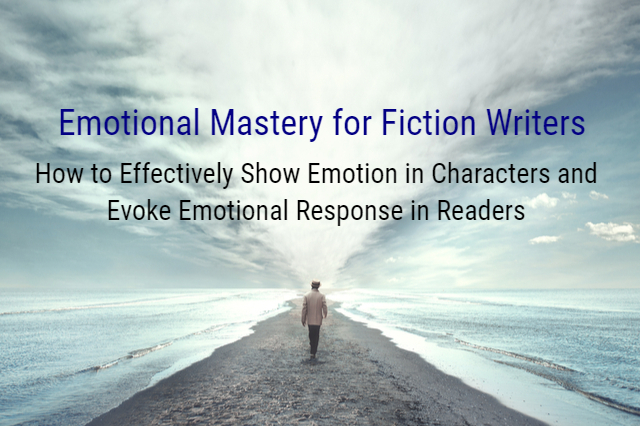
It’s really amazing, if you stop to think about it. Readers will willingly suspend disbelief and subject themselves to the gamut of emotion, making themselves vulnerable to intense feelings.
Some readers read for the suspenseful ride. Like my husband and kids, who eagerly climb into seats on real roller coasters—they’ll even wait two hours to experience a two-minute ride just to get scared out of their wits.
Some readers are perfectly fine crying, feeling miserable, or aching in commiseration as they go on a difficult journey with a fictional character they love.
Fictional, not real.
Why do so many people love to do this? I don’t know. I can only speak for myself. There is something wonderful, magical, and sublime about being made to feel deeply about something outside my normal life.
Stories that remind me of what being human is all about, what love is, what loyalty is, what hope is, what being victorious looks like, lift me up, confirm my humanity, bring deeper meaning to my own life.
Seeing that we have readers willing to experience emotion when they turn the pages of our novels—no, not willing … expecting, hoping, and longing for an emotional experience—we writers need to become masterful wielders of emotion.
Writers Have to Dig Deep
Don’t try to name emotions, but what if you’re not the emotional type.
That’s not an easy thing to do. It takes thousands of hours of study, practice, and honing to become a master of emotion. And often that means we have to mine our own emotions.
We have to dig deep to reflect on how we react, respond, and feel emotionally to events, people, and situations so that we can try to capture those feelings and transfer them onto the page.
That’s the advice Hemingway gave, and it’s the best advice I’ve seen on the emotional craft of fiction: “Find what gave you the emotion . . . Then write it down, making it clear so the reader will see it too and have the same feeling as you had.”
Hemingway’s advice gives us the first step to learning how to manipulate readers’ emotions. In addition to examining how you emotionally react to things you see around you or on TV, pay attention to those moments when you feel strongly while reading a novel.
Instead of thinking, “I want my reader to feel sad,” how much more masterful would it be to dig deep into the many emotional nuances we experience when any given event occurs.
Do what Hemingway instructed. When you feel something, write down what action took place that made you emote. Then dig into the emotions and learn not just why you feel this way but what exactly you are feeling. What thoughts led you to those feelings?
If you can nail the thoughts, which are words, you can put similar thoughts (words) into your narrative and character’s voice.
That’s the first step toward evoking emotion in readers in a masterful way.
I usually can’t put a name to the composite emotion I feel in a given situation. I can toss around a whole lot of words. But, to me, trying to name complex emotions is like trying to catch the wind with chopsticks.
Think of it this way. You might not know what to name a particular color shade, but if you have a few tubes of paint and play around with the quantities, you just might be able to re-create the color perfectly.
That’s what you need to do with words on your palette to create the same emotion.
If you consider yourself an unemotional person, not used to examining into your feelings, this aspiration to become an emotional master is going to kick your butt.
I’ve had numerous editing clients tell me they really struggle with this. They say, “I’m just not the emotional, introspective type. I rarely get in touch with my feelings.”
Let’s face the facts: since readers read to care, to be moved, if you want to write the kind of novel that will move them, you must find those emotions within you.
Here’s one thing that might help: music.
I don’t know about you, but music is very powerful to me. It can evoke tremendous emotion in me. That’s why movies can move us in such emotional ways—they not only show (rather than tell) scenes in which characters are emoting, there is a soundtrack that overlays, designed to stir emotion.
Who can explain why certain musical scores make some people weep? Or want to cry out in joy? We can feel nostalgia, poignancy, love, peace, awe when we listen to music. It’s hard to name the emotions we feel when we listen.
Certain instruments might move us a certain way. Some are moved by opera. Or a sweet folk song.
The first time I heard Pharrell Williams’s song “Happy” on YouTube , I got so happy I started dancing around the house just like all those people in the music video. That song was so powerful that people all over the world got hooked on it.
Even Oprah had Pharrell on her show to talk about that one song. If you haven’t seen it, take a minute and watch. It shows ordinary people of all ages, races, classes, stature dancing to the song in locations around the world.
Music is powerful. Music and dancing are universal. Joy is something everyone wants to feel. Emotion is powerful, infectious.
Pharrell’s music and lyrics, along with showing people dancing and moving to his song, gets people in touch with that place inside that feels joy in life. And that’s magical.
We also bring our past to our response to music. What are your favorite songs from when you were a teen? Music sparks intense memories.
When I hear certain songs, I’m instantly transported to specific times and places in my life. Not only that, I can almost taste and feel as if I were back there, thinking and feeling the way I did when I was fifteen or twenty.
Music sparks memory. Memories spark emotion. Emotions lead to more thoughts and memories, and more emotion.
If you know you need your character to feel something and you’re not sure how to tap into that feeling, try to find some music that will take you there.
I have a playlist of hours of soundtrack music. And I often choose a particular piece to listen to when I’m writing or plotting a scene in which I need to feel something specific. I may not be able to name the emotions, but I know what feeling I’m searching for.
Music can free you up; bypass your resistance or writer’s block. If you need to write an exciting high-action scene and you put on music that is exciting and stimulating, it can get your creative juices flowing and drown out your inner editor.
Emotional mastery is one of the hardest skills for a fiction writer. While there are many techniques to help you get there, music is one tool that will help you mine your emotions.
Special Offer for ProWritingAid Readers:
Want to learn how to become a masterful wielder of emotion in your fiction enroll in lakin’s new online video course, emotional mastery for fiction writers , before september 1st , and get 50% off using this link .
Did you know ProWritingAid can help you show emotion in your writing? The Style Report will point out emotion tells, so you can turn those into more poignant descriptions.








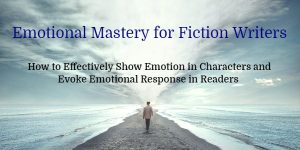


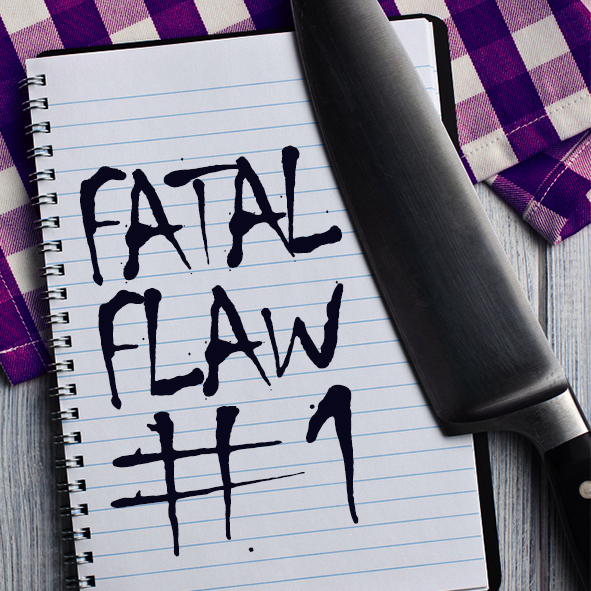
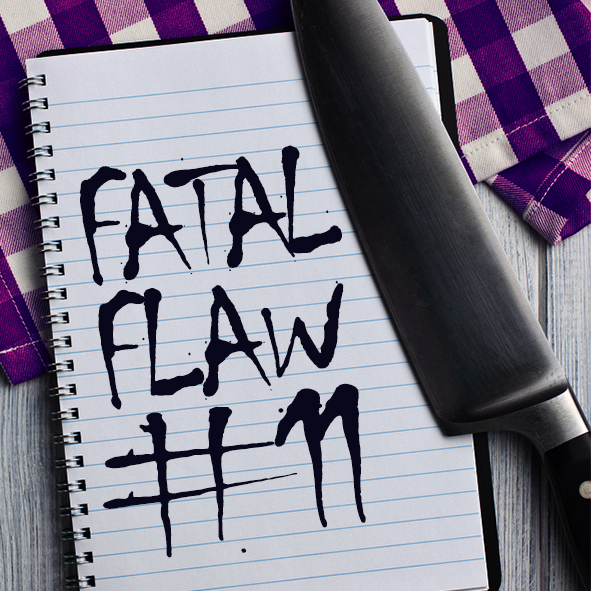
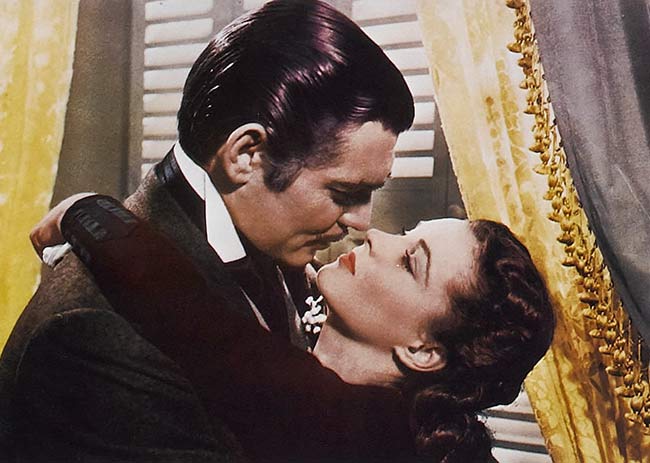
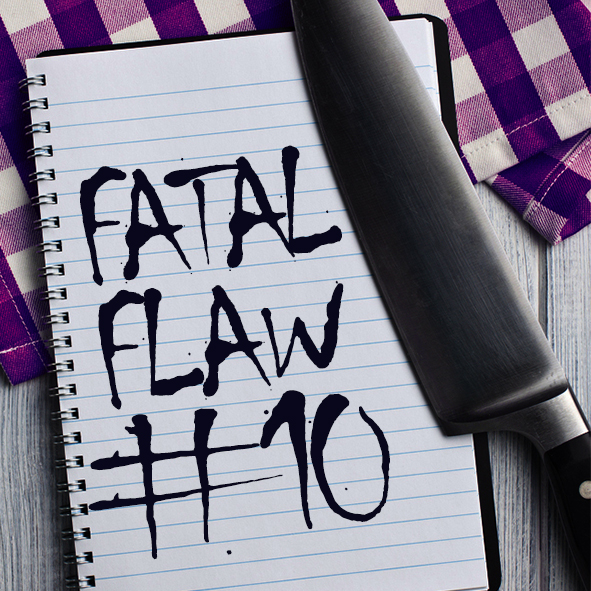


















COMMENTS
Learn how to convey excitement in writing with tips, tricks, and synonyms. Explore the nature, manifestations, and differences of excitement from other emotions.
When it comes to creative writing, the right words can transform a static scene into a dynamic spectacle. To describe excitement, think beyond the usual and obvious. Use many adjectives and vivid imagery to evoke the senses and emotions. Describe the body language of your character—perhaps a broad grin, racing heart, or other physical ...
200+ Ways to Say "Excited": A Word List for Writers. Edgar Allan Poe said, "I need scarcely observe that a poem deserves its title only inasmuch as it excites, by elevating the soul. The value of the poem is in the ratio of this elevating excitement.". Wayne Dyer: "Van Gogh never made a penny in his entire lifetime.
Learn how to use exuberance, dog with two tails, pumped fist, twirled around, and more to express excitement in your creative writing. See examples of how to modify these phrases for your composition writing.
A list of ways to describe happiness, joy, contentment, hope, and gratitude in writing. Find examples of how to express emotions through internal monologue, dialogue, and actions.
Learn how to describe excitement in different scenarios with a variety of adjectives. Find positive and negative adjectives for excited, synonyms, antonyms, and example sentences.
Moving about, being unable to stay still. Good-natured shoving and pushing. Waving the arms, using grand gestures. Drumming one's feet against the floor. Hugging, grabbing onto someone's arm and holding it. Bumping shoulders. Raising up or bouncing on tiptoe. Phoning or texting to share news or pass on the excitement.
It is characterized by a heightened sense of energy, arousal, and engagement, and is often accompanied by physical sensations such as a racing heart, rapid breathing, and a surge of adrenaline. Excitement can be triggered by a variety of experiences, such as the anticipation of a new adventure, the thrill of a challenging task, or the joy of ...
Tip #1 - Use active voice. Choosing active voice (where a subject performs an action) over passive voice (where an action is done to a subject) enhances the emotional impact of your writing by emphasizing the person or thing responsible for the action. For example: Passive voice: "Yvette was betrayed by Marcos.".
No two characters should express emotion the same way. To avoid reusing tired gestures or slipping into telling, use this thesaurus to brainstorm fresh body language, visceral sensations, and thoughts to express your character's emotions in ways that make sense for them.
When you want to come up with unique body language, put yourself in the character's shoes and imagine the scene. Let yourself feel what they do, then set out to describe it. Thoughts are an excellent way to show emotion, as long as they adhere to the rules of POV. When swept up by emotion, our thoughts follow certain patterns.
When describing arousal in writing, it is important to consider the complexity of your text (perplexity) and the variation of your sentences (burstiness). When writing, think about how you can convey an aroused state in a way that is both captivating and understandable. To increase perplexity, try to include some longer or complex sentences ...
For example, riding a roller coaster can be a thrilling experience that gets your heart racing. Exhilarating: This word describes something that brings a feeling of joy, energy, and excitement. Skydiving can be an exhilarating activity that fills you with adrenaline. Electrifying: When something is electrifying, it generates a strong sense of ...
In your writing, use a variety of smiles to show different shades of happiness. Describe the way a smile transforms a face, how it feels to smile after a long day of sadness, or the effect of someone's smile on those around them. Examples: A slow smile that spreads like sunrise. Smiles exchanged over a cup of coffee.
Enthusiasm is closely related to Excited/Elated. If you need more ideas on how to express this emotion, have a look. Win your readers' hearts by tailoring your character's emotional responses so they're compelling, credible, and realistic. If you struggle with writing emotions, you aren't alone. has helped writers all over the globe ...
Being excited doesn't always feel like a positive experience, especially when it really takes a hold of someone! Using "antsy" is a great way to describe when your character's excitement has started to go out of control. 2. Bubbly Definition. Full of energy and enthusiasm. Examples
Show happiness through character body language. Body language is another way to show happiness in your writing. A happy character may have a spring in their step. They may walk at a quicker pace than usual, swinging their arms as they go. You might have a character fold their hands behind their head.
That's the advice Hemingway gave, and it's the best advice I've seen on the emotional craft of fiction: "Find what gave you the emotion . . . Then write it down, making it clear so the reader will see it too and have the same feeling as you had.". Hemingway's advice gives us the first step to learning how to manipulate readers ...
The people experiencing the excitement are exhilarated: It was so exhilarating to ski on the fresh snow. When we reached the top of the mountain, we were exhilarated and exhausted. Thrilling also means 'very exciting', and we talk about the thrill of doing something exciting. However, thrilled is almost always used in a more restricted way ...
Gripping: A feeling of overwhelming emotion and an almost uncontrollable excitement. Compelling: Something that is captivating and awe-inspiring. Sensational: Causing great interest among the public as well as excitement. Powerful: Used to describe any distinctive and beautiful impact on the mind or body.
Counselors tell us that thoughts lead to emotions, and emotions lead to actions. As a writer, you can easily show your character's thoughts and actions. Readers are smart enough to deduce the emotions based on what the characters think and do. So often it seems writers are in a hurry. When you have a very emotional scene, slow it down.
Unfortunately, their prevalence also makes them the first thing that comes to mind when we're trying to describe emotions in writing. Keep pushing past the first thought. Maybe even the second and third, too. Play with metaphor and (once again) use the physical to make the emotional come alive.
Feeling light (excited) or feeling heavy (nervous). Feeling energised (excited) or exhausted (nervous). Feeling zoned out. Being overly aware of another person or a situation. A last thought - both excitement and nervousness can rub off on other characters and they might begin to act nervous or excited too.